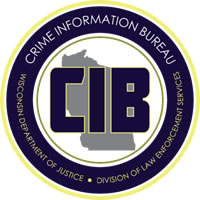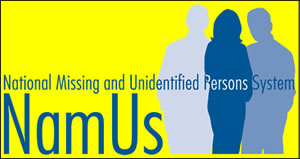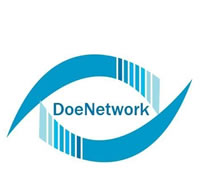
You're here: MibSAR :: M-P Sourcebook Table of Contents :: Databases
Enter Your Loved One's Case Into These Essential Missing-Person Databases
| << Prior Chapter | Next Chapter >> |
Families with missing loved ones should ensure their cases are entered in the following state, provincial, national, and international databases, as appropriate.
KEEPING THEM HONEST: To make sure your case has in fact been entered into the appropriate databases, ask for copies of reports documenting such entries..
 |
|
| The Law Enforcement Information Network (LEIN) | |
Administered by the Michigan Department of State Police (MSP), the goal of LEIN is to assist the Michigan criminal justice community in the performance of its duties by providing and maintaining a computerized filing system of accurate and timely documented criminal justice information readily available to all criminal justice agencies.
 |
|
| The Michigan Missing Child Information Clearinghouse (MMCIC) | |
Administered by the Michigan Department of State Police, the clearinghouse oversees and ensures that law enforcement agencies follow the law as it relates to the immediate entry of missing children (under the age of 18) into Michigan's Law Enforcement Information Network (LEIN) and the National Crime Information Center (NCIC) system.
It ensures that parents have followed all the proper procedures for reporting a missing child to their local police department and getting the child entered into LEIN/NCIC. Reports of runaway, parentally abducted or otherwise missing or exploited children are made directly to local law enforcement agencies.
 |
|
| The Transaction Information for the Management of Enforcement (TIME) system | |
The TIME system is administered by the Wisconsin Department of Justice's (WDOJ's) Crime Information Bureau (CIB).
 |
|
| The Clearinghouse for Missing and Exploited Children and Adults (CMECA) | |
Administered by the Wisconsin Department of Justice (DOJ), CMECA actively assists law enforcement officers, victims, and victims' families in search, recovery and reunification in cases involving abducted, missing, and/or exploited children and adults.
CMECA provides technical investigative assistance, referrals, and advocacy in navigating the criminal justice system — along with other resources, services, and information — to families of children and adults who are missing and considered endangered in the state of Wisconsin, nationwide and internationally.
 |
|
| The National Crime Information Center (NCIC) | |
It's an electronic clearinghouse of crime data that can be tapped into by virtually every criminal justice agency nationwide, 24 hours a day, 365 days a year.
Administered by the U.S. Federal Bureau of Investigation (FBI), NCIC assists criminal justice professionals apprehend fugitives, locate missing persons, recover stolen property, and identify terrorists.
NCIC also assists law enforcement officers in performing their duties more safely, and provides information necessary to protect the public.
 |
|
| The National Missing and Unidentified Persons System (NamUs) | |
NamUs is administered by the National Institute of Justice (NIJ) in the Office of Justice Programs (OJP), an agency within the U.S. Department of Justice (DOJ).
NamUs and its cutting-edge DNA technology is so critical to solving missing-persons cases in the United States that it is covered in-depth here.
 |
|
| The National Center for Missing & Exploited Children (NCMEC) | |
As a private non-profit corporation, NCMEC works with families, victims, private industry, law enforcement, and the public to assist with the prevention of child abductions, recovery of missing children, and provision of services to deter and combat child sexual exploitation.
| Ontario's Missing Adults (OMA) | |
As a non-governmental organization, OMA's activities focus on building awareness, providing information and resources, liaison work between families and law enforcement agencies, and advocating on behalf missing persons and their families.
 |
|
| The National Centre for Missing Persons and Unidentified Remains (NCMPUR ) | |
Administered by the Royal Canadian Mounted Police (RCMP), NCMPUR features profiles of missing persons and unidentified remains that have been published at the request law enforcement investigators, coroners, or medical examiners.
 |
|
| The National Missing Persons DNA Program (NMPDP) | |
Administered by the Royal Canadian Mounted Police (RCMP), NMPDP coordinates it work with the National Centre for Missing Persons and Unidentified Remains (NCMPUR) and the National DNA Data Bank (NDDB) to identify missing persons using DNA.
 |
|
| The Canadian Police Information Centre (CPIC) | |
 |
|
| The Doe Network (DN) | |
As a volunteer organization, it is devoted to assisting law enforcement in solving cold cases involving unexplained disappearances and unidentified victims in North America, Australia, and Europe.
| << Prior Chapter | Next Chapter >> |
People who say it cannot be done,
should not interrupt those who are doing it.
— Author unknown

If you've been able to read this
Web page...
thank a Teacher;
If you've been able to read this
Web page in English...
thank a Veteran.
— Author unknown
Copyright © 1984-
March 23, 2021
by Michael A. Neiger
Contact Michael Neiger via e-mail at mneiger@hotmail.com
Top
You're here: MibSAR :: M-P Sourcebook Table of Contents :: Databases